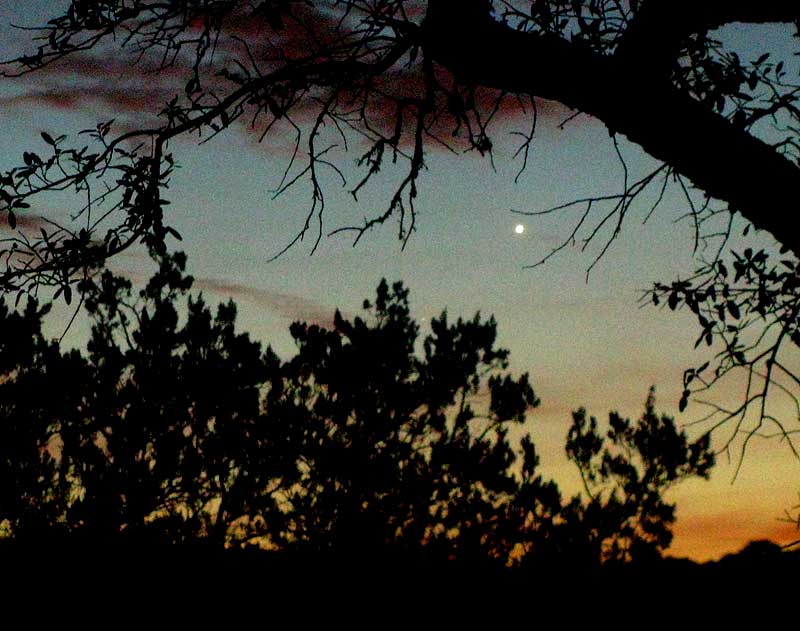Excerpts from Jim Conrad's
Naturalist Newsletter

from the January 26, 2014 Newsletter issued from the Frio Canyon Nature Education Center in the valley of the Dry Frio River in northern Uvalde County, southwestern Texas, on the southern border of the Edwards Plateau; elevation ~1750m (~5750 ft); N29.62°, W99.86°; USA
VENUS AS MORNING STAR
Each morning a little before dawn I run for half an hour along the little dead-end road in the valley. When I return the sky still is dark, but by the time I fix breakfast, tune in Public Radio's morning program and sit facing the wall-size window toward the east -- at about 6:30 -- the eastern horizon is turning pale, maybe with some color, silhouetting the trees outside my window and the hills across the valley. And, these days, there's a morning star, which you can see through my window as shown above.
There's not always a morning star. This one just began appearing at my special time about a week ago. Each morning as light comes on, it stands a little higher in the sky, and eventually it'll drift elsewhere. This one will be our morning star for most of 2014, however. It'll be at its brightest on the morning of February 11, displaying a magnitude of -4.6. It's at -4.5 now, on January 26, so it'll grow yet a little brighter during the next few mornings. Remember that with regard to the magnitude of bright objects in the sky, the brighter something is, the lower its number of magnitude.
Of course, our morning star isn't a star at all, but rather Venus, second planet from the Sun.
Actually, this Sunday morning, January 26, Venus isn't the only astronomical entity orbiting the sun and occupying that patch of sky. A tiny bit south of Venus, if it were a bit brighter and the quarter Moon weren't bleaching the sky so, you might make out Pluto, glowing dimly with a magnitude of only 14.2. I was taught that Pluto was our Solar System's outermost planet, but in 2006 it was demoted from planet status to being only one of several large, icy bodies occupying the outer Solar System.
Unlike the large, bright planets of Jupiter and Saturn, you'll never see Venus on the opposite side of the sky from the Sun. Venus always remains near the Sun, whether as a morning star rising just before the Sun, or the evening star setting soon after the Sun, because Venus follows an orbit entirely within the Earth's larger orbit. In our morning sky, Venus will reach its maximum distance from the Sun in late March, then begin appearing nearer it each morning. Diagrams nicely showing how all this works can be studied at http://jeffreylhunt.wordpress.com/2013/11/27/venus-as-a-morning-star-2014/.